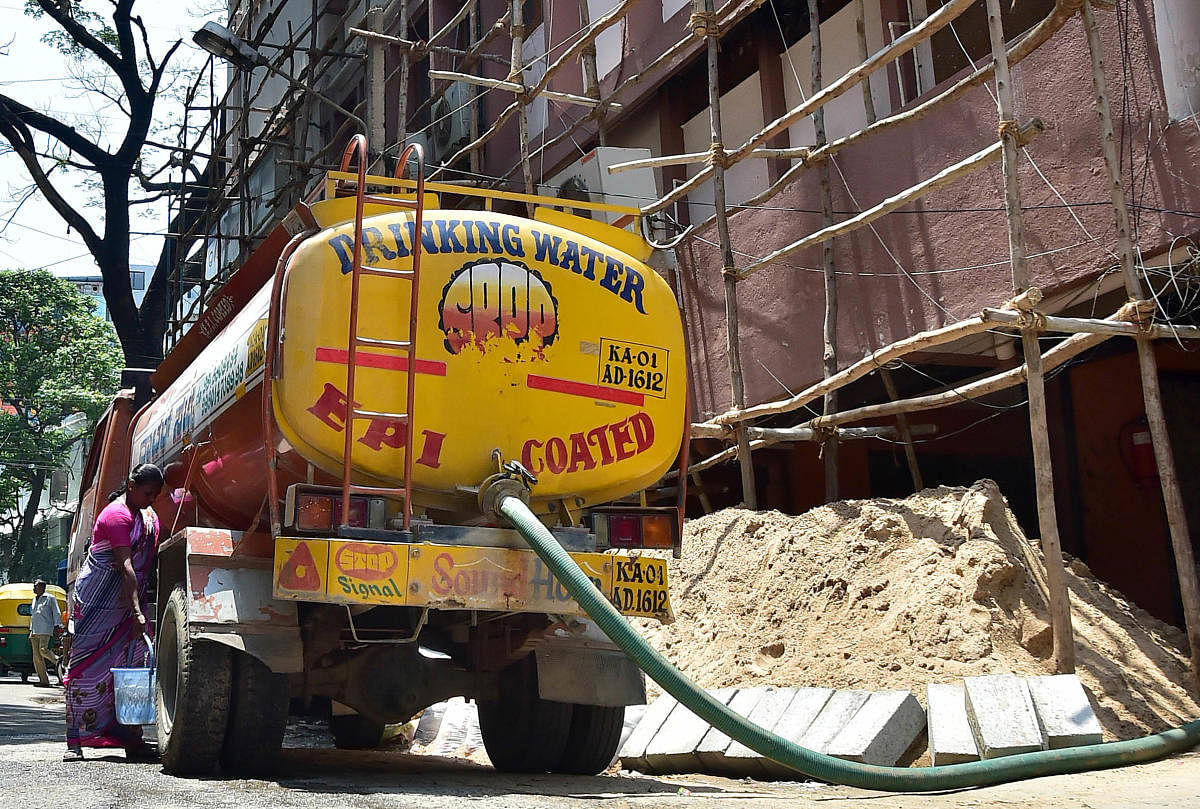
Karnataka’s Central University is facing a water crisis so severe that it has sent all its students home for the summer, and is considering whether it can afford to take in students next year. The Dharmadhikari of Dharmasthala’s Manjunatheswara temple has appealed to devotees to postpone their visits until the monsoon, because of insufficient water. Along with five other states in India, Karnataka is facing a water crisis so severe that the Central Government has issued a water advisory. The delayed rains have created a challenge in Bengaluru as well, with bore wells drying up, and water tankers a scarce commodity, whose prices have doubled, and in some areas even tripled in the past 15 years.
The monsoons have now hit Kodagu and the coast of Karnataka, and Bengaluru can hope for respite from drought soon. But with the rains, will we return to a collective loss of memory? In the summer, newspapers and public discussions are full of stories of heat waves, concrete heat islands, rampant tree felling and the loss of lakes. Once the rains hit, we forget, returning to business-as-usual.
The “unseasonal” rains that India faces are extreme, compared to past records. This year’s pre-monsoon season is the second-driest that India has faced in the past 65 years. But such extreme droughts are going to become increasingly common in the future, with increased climate change, urbanisation, and the felling of trees. Recent research by Indian scientists shows that the South Asian monsoon is much weaker than it used to be. Even when the rains arrive, they are likely to come in shorter and more intense bursts, leading to episodes of extreme floods followed by long droughts.
What is Bengaluru doing in response? The city continues to absorb more cars each day, making its already swollen roads unmanageable. To deal with traffic, rather than invest in public transport — suburban rails, more buses, and better last-mile connectivity — Bengaluru’s planners are myopically focused on adding more flyovers and signal-free corridors – felling trees in tens of thousands. The resultant increase in air pollution, increasing the concentration of aerosols in the atmosphere, further contributes to the weakening of the monsoon, creating a vicious cycle.
There are more local-scale effects as well. Bengaluru’s lakes were once essential to maintaining the city’s water supply. An intricate network of hundreds of lakes, ponds, and wetlands, interconnected by storm water channels or kaluves, ensured that much of the rainfall that fell within Bengaluru was collected, filling the water bodies with life-giving water, and recharging the parched earth.
Bengaluru in the 1880s had close to 1500 open wells, linked to lakes, supplying its residents with water. In fact, until the 1890s, the city progressively added more water bodies as its population grew. Lakes, wells and connecting channels were cleaned and maintained each year, and lake goddesses were worshipped and thanked through songs and festivals for the bounty they provided.
When piped water began to come in to Bengaluru, in a very short sighted manner, planners ruptured this long enduring connection with water – by emptying the lakes, filling in the wells, and building over the connecting channels.
Famous lakes such as Sampangi (now Kanteerava sports stadium) and Dharmambudhi (Majestic bus terminus) disappeared entirely from Bengaluru, which successively imported water from Hesarghatta, Tippagondanahalli, and now from Krishnarajasagara.
But with all sources of water running dry, Bengaluru’s elected representatives are planning increasingly bizarre schemes – to get water from areas as far flung as Yettinahole. But with climate change on the horizon, it seems likely that all we will do is to strip Yettinahole of water, further depriving Dakshina Kannada of water while not solving Bengaluru’s water problems.
Local measures
Instead of this, we need to plan for local measures. First, lakes, wetlands and interconnected kaluves in Bengaluru must be desilted and revived, so that they can soak up monsoon water like sponges, returning this bounty to us over the dry months.
Second, we need to encourage the monsoon to revive — to the extent possible. To do this, we must get into focused mission mode, by planting lakhs of trees, which will have multiple effects. The branches, roots and leaves of trees act as a buffer in intense rains, slowing down the force of the rainfall, and making it hit the ground more gently — this reduces the amount of soil swept away in the rains, and holds the water on the ground for longer periods of time, increasing the amount of ground water recharge.
Third, trees reduce the intensity of urban heat islands and increase the likelihood of rainfall. If Bengaluru had the kind of tree cover it could boast of in the past, road surface temperatures would be cooler by much as 30°C, and air temperatures by 3-5°C, reducing the evaporation of water, and mitigating the side-effects of drought. Fourth, trees significantly reduce air pollution on roads — the high levels of aerosol pollution in Indian cities have contributed to the weakening of the South Asian monsoon.
Sadly, we are doing just the opposite. Felling trees, building on lakes, concreting more spaces, and increasing air pollution. What is the plan for Bengaluru, which already contains over 12 million people, and is projected to grow to 20 million soon? If we do not have water now, what will we do in years to come?
The complete absence of systematic future planning is clear — and the consequences frightening. The world has already warmed by 1.2°C, and we are witnessing the effects in Bengaluru. In a decade or so, we are very likely to head towards a warming of 2°C, or even more, with catastrophic effects on the monsoon. We need a plan for the future. Can we ensure that we do not engage in collective amnesia once the monsoons hit?
(The writer is Professor of Sustainability, Azim Premji University)
